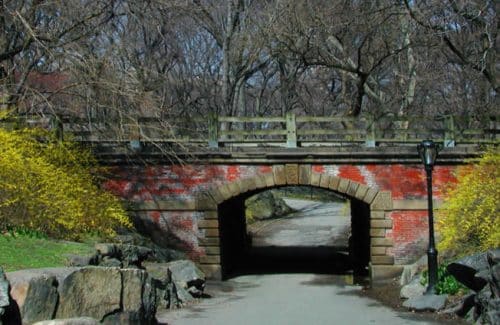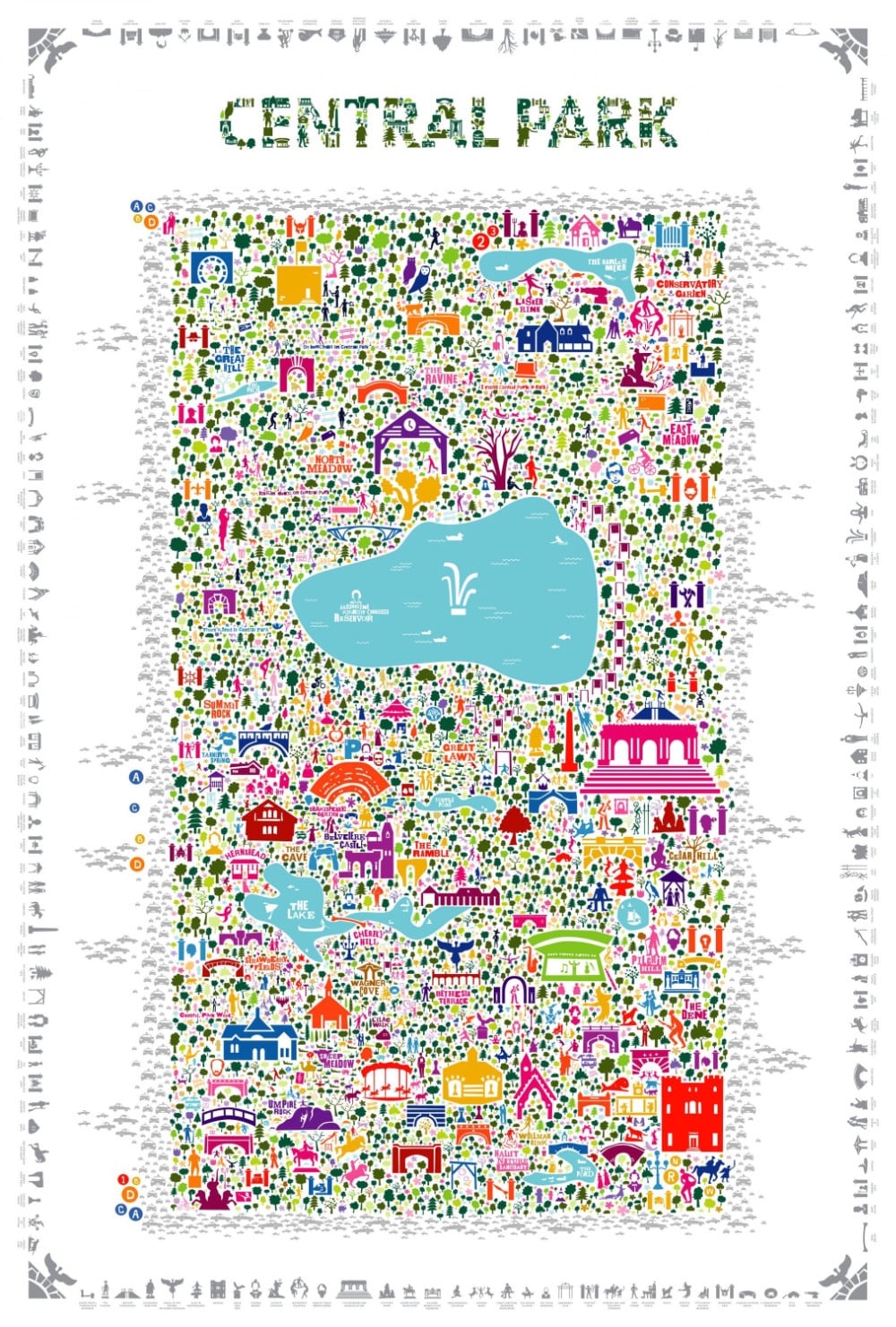 Willowdell Arch
Willowdell Arch
Willowdell Arch is one of the loveliest bridges in Central Park. There are some striking stylistic details, like the rusticated voussoirs between the abutment and the spring blocks, the coffers of the brick vault, or the keystone and spring blocks, which are vermiculated. The archway has bench seating in the wall arcades. A center niche on the north side once contained a fountain, now broken. The idea was to give mothers a place to rest and relax with their children in tow, though it seems doubtful that the echoes under an archway could give any mother relief from boisterous youngsters for too long.
Above the sandstone coping atop the arch, an original ornamental cast-iron railing has been replaced with more practical wooden parkway guardrails. A treasurer’s list of disbursements for 1860 notes a payment to the J. B. and W. W. Cornell Ironworks for the iron railing.
The Parks Department’s 1938 survey of bridges reveals an inoperable drinking fountain inside the archway. It also notes an “iron pipe railing in fair condition” instead of the original cast-iron railing.
Willowdell’s archway is only 49 feet long, measuring 14 feet 10 inches across and 9 feet 10 inches high. Weathering inside the archway from wind-whipped rain has eroded mortar and created some efflorescence.
Outside the eastern portal is a statue dedicated to the dog Balto. It was given to the city to commemorate the efforts of Alaskan sled dogs who transported diptheria serum across Alaska. The monument, dedicated to the lead dog of the last dog team to get through, was designed in 1925 by Frederick G. R. Roth, who was to head the sculpture program of the WPA (Works Progress Administration) in the 1930’s.
The inscription commemorating Balto the Dog reads: “Dedicated to the indomitable spirit of the sled dog that relayed antitoxin six hundred miles over rough ice across treacherous waters through arctic blizzards from Nenana to the relief of stricken Nome in the winter of 1925. Endurance. Fidelity. Intelligence.”


 Willowdell Arch
Willowdell Arch